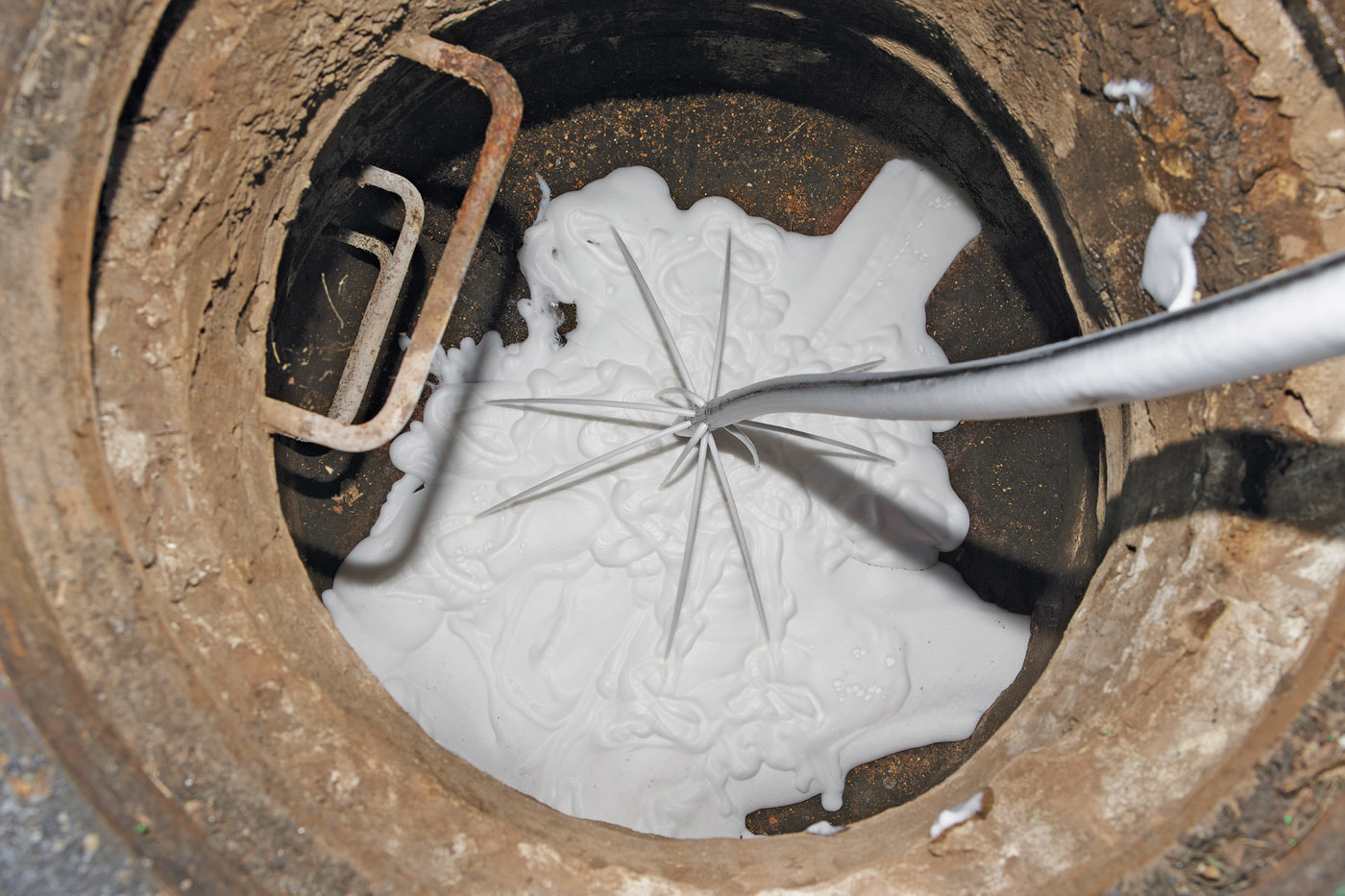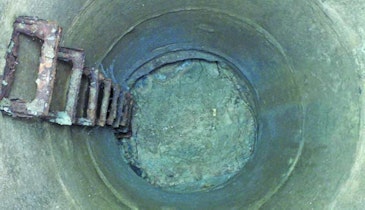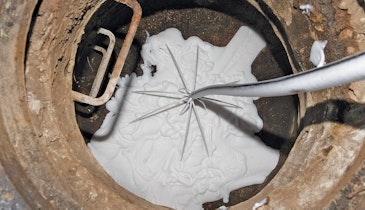When the Virginia Beach (Virginia) Department of Public Utilities needed a proactive management, operation and maintenance (MOM) program to address its sanitary sewer overflow problem, it rooted out the cause with Duke’s Root Control’s Razorooter II.
The Razorooter II is a herbicide-laden thick foam the consistency of heavy shaving cream. Since effectively killing roots in sewer systems requires access to the entire line, the Duke’s crew inserts a hose from manhole to manhole. The hose releases and sprays the foam in all directions, allowing it to adhere to roots and penetrate through wye connections to kill roots even in lateral lines.
The entire system is treated as the foam compresses against pipe surfaces and penetrates cracks, joints and connecting sewers. Roots are killed on contact inside and outside the pipe walls before decaying naturally and sloughing away. Regrowth is then delayed for two to three years. Trees and other aboveground vegetation are not harmed, according to the manufacturer.
SSOs in Virginia Beach
The city of Virginia Beach has 400 pumping stations, 1,800 miles of gravity pipe and 190 miles of force mains. The Department of Public Utilities needed an MOM program to determine the cause of stoppages and overflows, begin building a maintenance history, along with work process and system characteristics.
Inspections and thorough analysis showed that grease and roots were the top two causes of the city’s SSOs, and Duke’s Razorooter II pilot program was initiated.
The results of the Razorooter II MOM program showed instantaneous return on investment via the reduced frequency of SSOs.
In the formal root control program’s first year, the number of SSOs dropped more than 30% and have continued to drop substantially every year since.
Taking an O&M approach as opposed to a find-and-fix mentality — all other things being equal over the course of 20 years — would cost the city about $157 million, according to the manufacturer. Meanwhile, the traditional once-and-done solution would cost $400 million and could require reinvestment 20 years down the road.
“The comprehensive MOM program, which includes a sizeable root control effort, is a prime example of a success story that can be shared with other similar communities,” says Aaron Nelson, P.E., vice president of Brown and Caldwell. “It documents capacity assurance results and reductions in SSOs — which was our primary goal — without the high cost of implementing traditional inflow and infiltration reduction efforts.
“We now have a good, solid foundation, fewer environmental impacts and a process to continually get to the cause — grease and roots — instead of our previous reactionary approach to clean when the stoppages occurred. We have made great strides.”

Duke’s Root Control is focused on helping its customers’ collections systems run efficiently and cost effectively. The company identified a need for root control in 1979 and became a trailblazer in the industry. Today, Duke’s continues to build on its innovative culture with a range of technology solutions for FOG and I&I that transition clients’ operations and maintenance programs from reactive to proactive. The company’s solutions pinpoint critical defects and capacity problems to isolate rehabilitation, prolonging the life of existing infrastructure and reducing costs. 315-472-4781 | www.dukes.com





